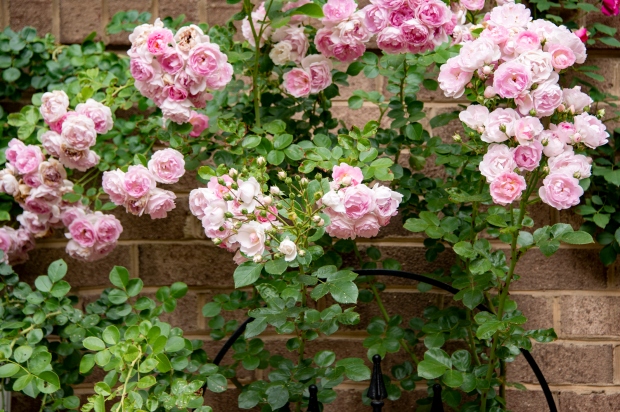Choosing Trellising for Outdoor Vines
For many gardeners, the thrill of outdoor vines is choosing the support structure they go on. They offer the perfect excuse to invest in a beautiful arbor or pergola or to hide ugly house siding or fencing you don’t want to look at.
The type of support structure you need will depend on the vine variety. Heavy plants, including trumpet vine, wisteria, grapes, and Dutchman’s Pipe, require sturdy pergolas or iron trellises that can withstand their weight. Other varieties do fine with more decorative support structures.
Here’s how to determine the best support structure based on a vine’s growth habit.
Self-Clinging:
These types tend to latch onto any vertical surface without much help, making them ideal growers along brick walls and buildings. Ivy is the classic example. In most cases, your biggest challenge will be attempting to control or remove them.
Many varieties produce aerial roots that will grow into tiny spaces and crevasses to support the plant. If you want to avoid the damage of direct contact on your space, consider growing aerial rooted vines on lattices in front of the wall to prevent direct contact with it.

Twining:
Clematis, sweet pea, honeysuckle, and other twining varieties grow flexible stems that curl around objects to support the whole plant. They can support themselves on almost any vertical structure, including strings, wires, lattices, fencing, and standard trellises.

Sprawling:
Certain flowering plants like climbing roses tend to sprawl all over any support structure within reach. They lack the mechanics to stay in place, so you’ll need to use garden ties or stretchy fabrics to tie them where you want them. While sprawling vines require more maintenance, they allow growers to train the plants precisely where desired for stunning arrangements.

Best Materials for Trellising Vines
While it’s tempting to choose your vine supports based purely on appearance, you’ll be better served by thinking practically. The structure will be outdoors in all weather, so choosing durable materials like powder-coated steel or treated wood tends to be best.
Consider color as well — black trellising might look sharp, but the dark color may draw in too much heat and hurt the plant in the height of summer.

When choosing trellising, don’t compromise on quality or design, especially when using it for perennials. Once the plants get established, it will be all but impossible to switch it out to something you like better.